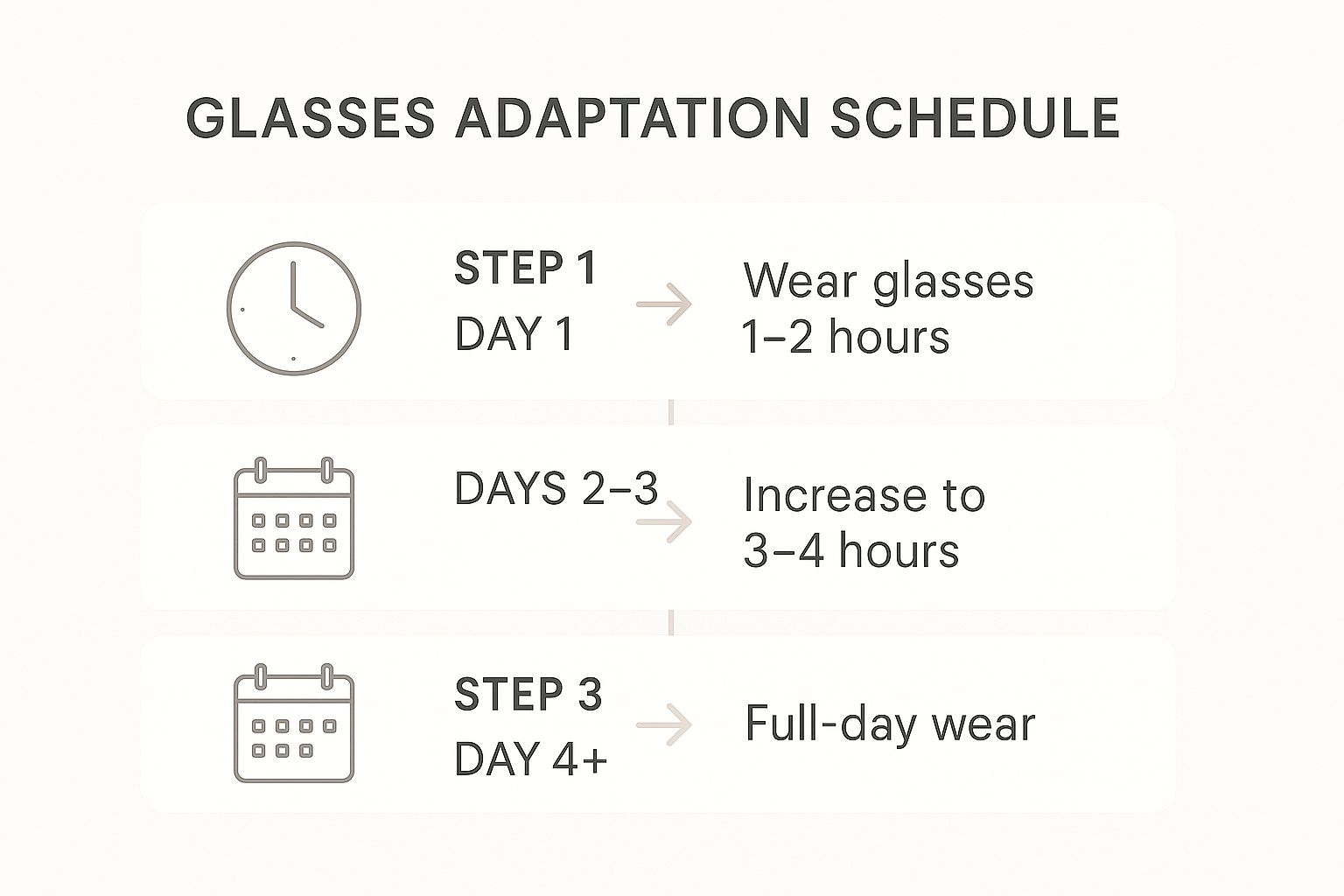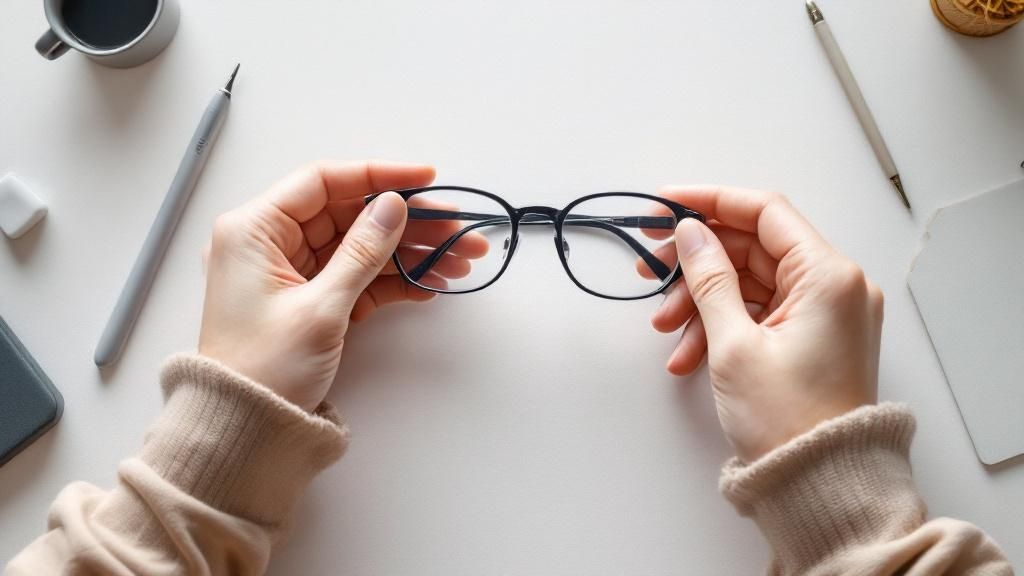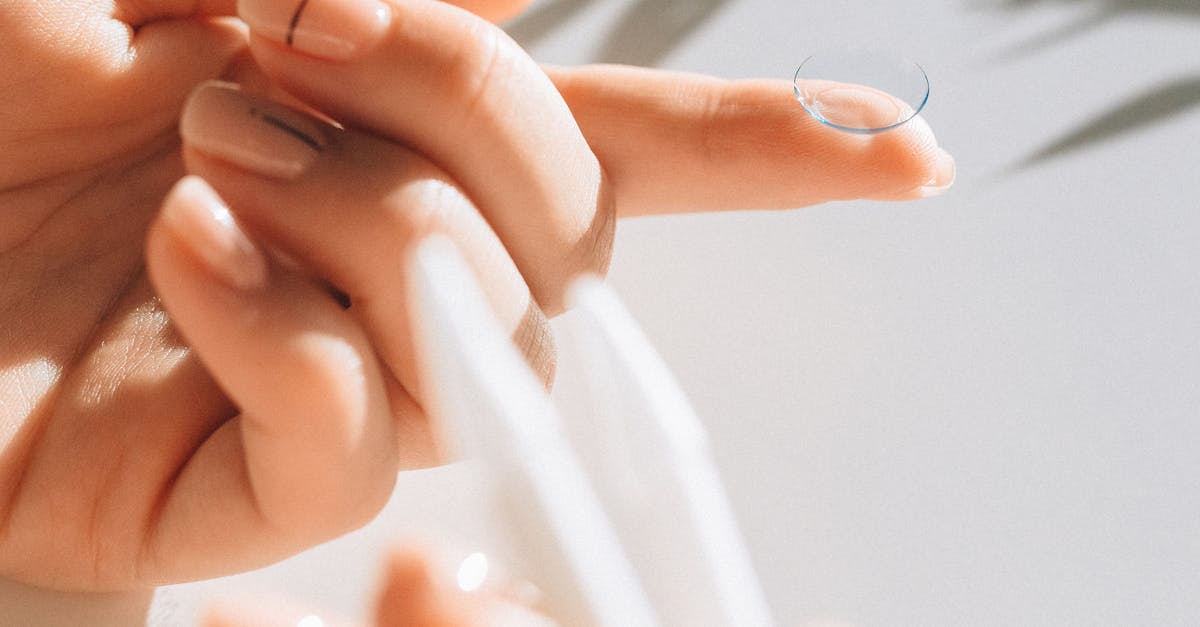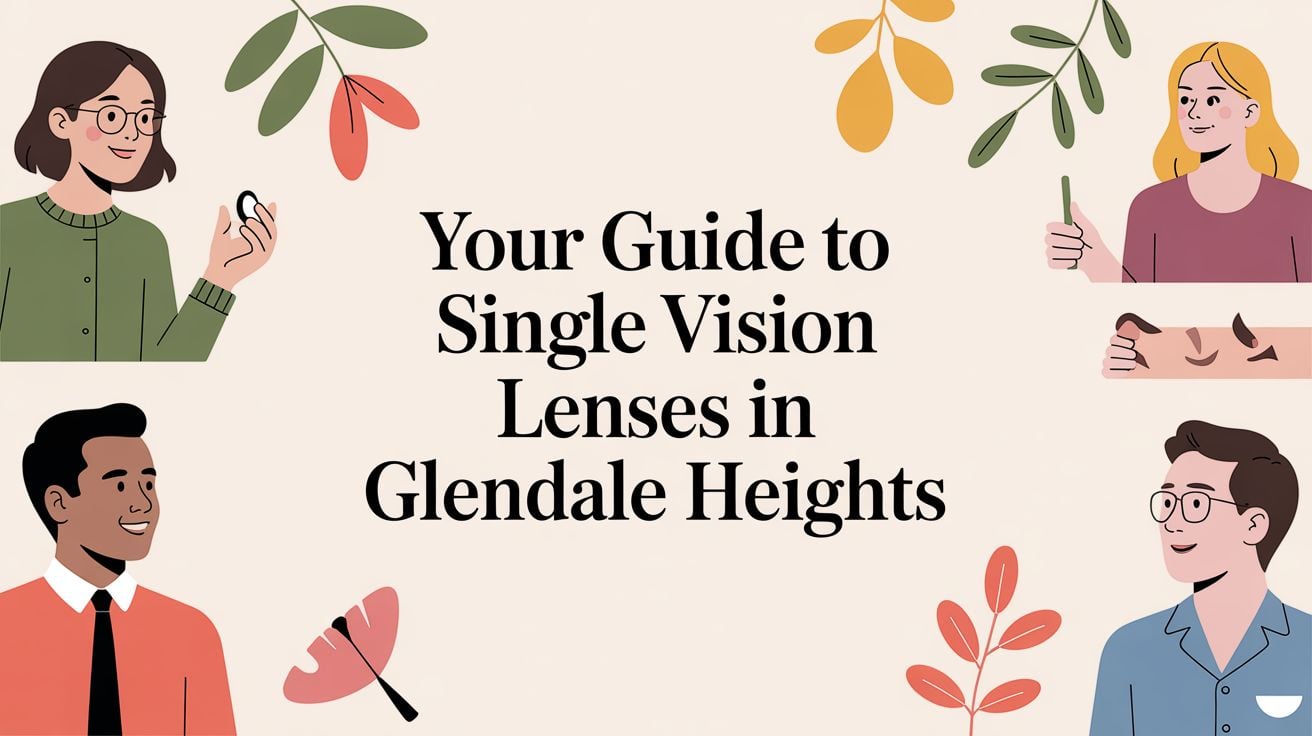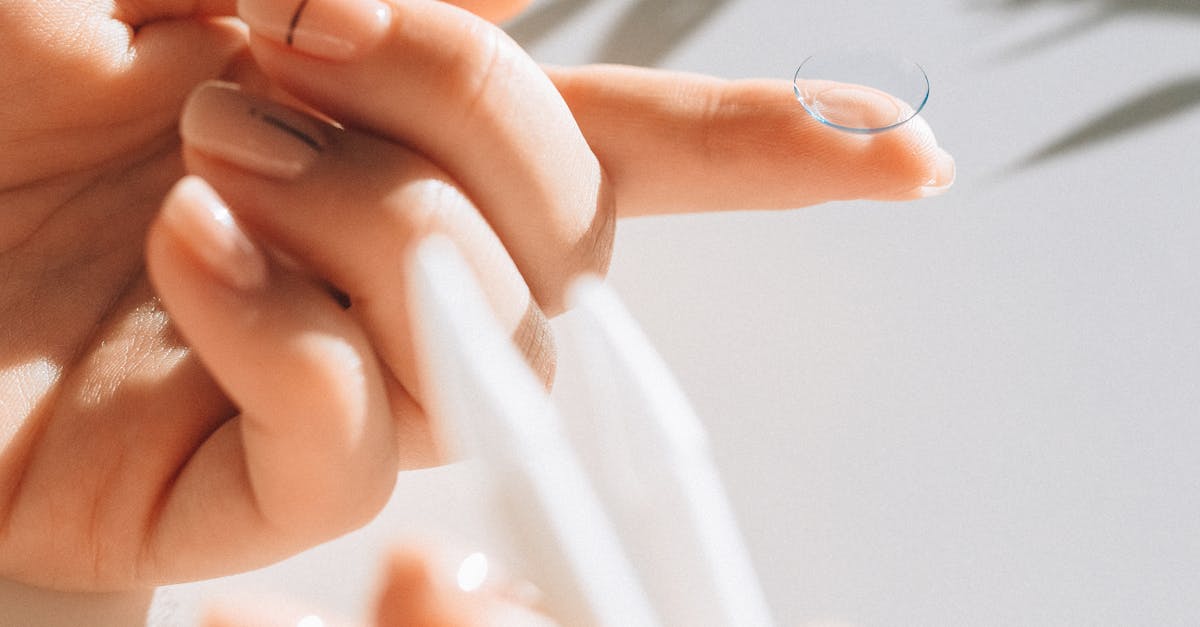Getting used to new glasses isn't instant, but it’s a journey we’re happy to guide you on here at iDoctor in Glendale Heights. It usually takes anywhere from a few days up to two weeks for your eyes and brain to fully sync up. The most important thing you can do is wear them consistently. Try to resist the temptation to switch back to your old pair, as that can really slow down the whole process.
Your First Few Days with New Glasses
So you've picked up your new glasses—maybe a sleek pair of Tom Ford frames from our boutique or your very first prescription—and the world looks… different. That's completely normal. This is your guide to navigating those first critical 24 to 72 hours.
Right now, your brain and eyes are working together to process the new, clearer information coming through your lenses. This can sometimes lead to some weird, temporary side effects. You might feel a little dizzy, notice your depth perception is off, or experience the classic "fishbowl effect," where things at the edge of your vision look slightly curved or bent. Don't worry, you're not alone.
Setting Realistic Expectations
Believe it or not, studies show that about 15-30% of people feel some sort of initial discomfort when they get new glasses. (Source: Global Eyewear Trends) Think of this adjustment phase as your brain learning to see in high-definition again.
These feelings are almost always mild and start to disappear the more you wear your new glasses. Your brain is a powerhouse of adaptability; give it a little time, and those new frames will feel like they’ve always been there.
The fit of your frames makes a huge difference. If your glasses are pinching your nose or constantly sliding down, the adjustment period will feel much worse. As the best optometrist in Glendale Heights, we can provide a quick professional fitting to fix this in minutes.
Easing into your new eyewear gradually can make all the difference. Instead of forcing yourself to wear them all day from the get-go, try a more measured approach.
Following a simple schedule like this helps prevent unnecessary eye strain and gives your brain a chance to adapt without feeling overwhelmed. And if you notice your frames are a bit loose during this time, you can learn how to tighten loose glasses yourself with a few simple tricks.
Common Adjustment Symptoms and Quick Tips
To help you identify what's normal, here's a quick rundown of common symptoms you might experience in the first few days and what you can do about them.
| Symptom | What It Feels Like | Quick Tip |
|---|---|---|
| Eye Strain | Your eyes feel tired, sore, or achy, similar to after a long day of reading. | Take short breaks. Every 20 minutes, look away from your screen or book and focus on something 20 feet away for 20 seconds. |
| Mild Headaches | A dull, persistent headache, often around your temples or behind your eyes. | Start by wearing your new glasses for just a couple of hours at a time, gradually increasing the duration each day. |
| "Fishbowl" Effect | The edges of your vision seem curved, distorted, or like you're looking through a fishbowl. | This is very common with stronger prescriptions or new lens types. It typically resolves on its own as your brain adapts. |
| Depth Perception Issues | You might feel like objects are closer or farther than they actually are. Be careful on stairs! | Move your whole head to look at things, not just your eyes. This helps your brain adjust to the new lens curvature. |
| Slight Dizziness | A mild sense of being off-balance or lightheaded, especially when moving your head quickly. | Avoid sudden movements for the first day or two. Turn your head slowly to allow your vision to catch up. |
Remember, these symptoms should be mild and improve each day. If they feel severe or aren't getting better after a week, it's a good idea to check in with your optometrist.
Practical Ways to Speed Up Your Adjustment
Once you’ve made it through the first couple of days, the real goal is to make those new glasses feel like they’ve always been there. The single best thing you can do? Consistency. It’s so tempting to reach for your old, comfortable pair, but try to resist. Every time you switch back, you’re hitting the reset button on your brain's adaptation process.
Commit to wearing your new frames full-time. Put them on when you wake up and keep them on. Whether you're driving down North Avenue, working at your desk, or grabbing groceries at Caputo's, this constant use is what teaches your brain to accept the new way of seeing. A little bit of initial awkwardness is a small price to pay for the sharp, clear vision that's waiting for you.
Mastering Everyday Tasks
Let's be honest, some daily activities can feel downright strange with a new prescription. A few minor tweaks to your habits can make a world of difference and get you over those humps quickly.
- Computer Work: Try positioning your monitor so it’s just a bit below eye level. This is a game-changer if you have progressive lenses, as it helps you naturally look through the correct "intermediate" part of the lens without craning your neck.
- Driving: This one is crucial. Instead of just darting your eyes to check mirrors or blind spots, make a conscious effort to turn your whole head. This is especially important for progressive lens wearers, as it helps you avoid the softer focus on the edges of the lenses.
- Reading: Find a comfortable spot for your book or phone and just tilt your head down slightly. This will align your eyes with the bottom portion of your lenses, which is designed for up-close focus.
Keep Your View Crystal Clear: A clean lens is non-negotiable. Smudges, dust, and fingerprints force your eyes to work overtime, which can easily lead to strain and headaches. Always keep a microfiber cloth and a proper lens cleaning solution handy.
It's helpful to remember you're not alone in this. The global demand for eyewear is massive—the market was valued at USD 89.98 billion in 2024 and is projected to hit USD 134.53 billion by 2033. That’s millions of people getting used to new glasses every single year. You can read the full research on the spectacles market if you're curious about the numbers.
To make things like screen time even easier on your eyes, think about your lens coatings. It’s worth exploring the benefits of anti-glare glasses, as they can significantly cut down on the eye fatigue caused by digital screens and harsh overhead lights.
Getting to Know Your New Lenses and Prescription
It's a common misconception that all glasses are the same. The truth is, knowing a bit about the "why" behind your new prescription can make the adjustment period a whole lot smoother. When you understand the tech packed into your new frames—whether they’re Cartier or Ray-Ban—you can work with your glasses, not against them.
Every type of lens comes with its own unique learning curve because each one fundamentally changes how you process the world around you.
- Single-Vision Lenses: These are the most straightforward, correcting for one field of vision—near, far, or intermediate. They almost always have the quickest adjustment time.
- Bifocal Lenses: You'll notice a distinct line on these lenses separating the distance and near vision zones. It takes a little practice for your eyes to learn how to jump between these two sections.
- Progressive Lenses: These offer a smooth, line-free transition between multiple distances, but they're also the most complex to get used to. Mastering them is all about training yourself to find the right "sweet spot" for every activity.
Why Do Different Lenses Feel So Different?
If you have progressive lenses, for instance, you have to get used to pointing your nose directly at whatever you want to see. You’ll find yourself looking through the top portion for driving, the middle for your computer screen, and the very bottom for reading a book. This specific head movement, instead of just flicking your eyes, is a brand new habit your brain needs to build.
It's not just the lens type, either. Special coatings can also subtly change how things look at first. An anti-glare coating might make nighttime lights look sharper, and a blue light filter can give your vision a slightly warm tint.
The initial strangeness isn't a sign that something is wrong. Think of it as proof that your brain is actively rewiring itself to a new, clearer way of seeing. Knowing how your lenses are designed to work gives you the confidence to push through it.
What About Modern Lens Technology?
The eyewear world is always changing, with new tech that can affect how we adapt. Take blue light filtering lenses. They’ve become incredibly popular for fighting digital eye strain, an issue that impacts at least 60% of people who spend a lot of time on screens. They're a game-changer, but many people notice a slight shift in color perception at first, which adds to that initial adjustment phase.
Just knowing that these small changes are a normal part of the technology you chose can make the whole process feel much less frustrating.
When Your Adjustment Issues Continue
Most people find their new glasses feel perfectly normal within a week or two. But what if that initial discomfort just won't go away? It's crucial to know the difference between typical adjustment symptoms and a genuine problem with your prescription or the fit of your frames. If you've given it a fair shot for two weeks and are still struggling, it’s time to stop trying to "tough it out."
Persistent issues are your body's way of telling you that something isn't quite right. Your comfort and vision are what matter most, so never hesitate to get in touch.
Signs It’s Time to Call Us
If you're well past that initial two-week period and still feeling significant discomfort, that’s a clear signal that a follow-up is in order. Keep an eye out for these specific red flags, as they usually point to something more than the standard break-in period.
- Ongoing Headaches: A mild headache for a day or two is one thing, but if they’re severe, daily, or just not getting better, that's not normal.
- Severe Eye Strain: Your eyes shouldn't feel constantly tired, sore, or achy. If they do, even after wearing your new glasses for a short time, something is off.
- Persistent Blurry Vision: Things should be getting sharper each day. If your vision is still blurry or you feel like you have to work to see clearly, we need to take another look.
- Dizziness or Nausea: While a little initial disorientation can happen, feeling consistently off-balance or queasy is a definite reason to call us.
Your vision is too important to compromise. If symptoms linger, a quick, professional re-evaluation can identify the issue, whether it's a minor prescription tweak or a simple frame adjustment. Don’t wait and wonder.
A follow-up visit to iDoctor, your local eye doctor in Glendale Heights, can resolve these problems quickly. Our team will meticulously double-check that your lenses match your prescription and re-evaluate the frame fit, making sure the optical center is perfectly aligned with your pupils.
Sometimes, the fix is as simple as a small adjustment to the nose pads or correcting a minor manufacturing error. Other times, your eyes might have just reacted unexpectedly to the new prescription. Whatever the cause, we're here to find the solution. Keeping your frames in great condition is also essential for comfort; take a look at our expert tips on how to care for your designer eyewear in Glendale Heights to ensure they always feel and look their best.
Now, Keep Them Looking Like New
So, you've made it past the initial adjustment period and are loving your new glasses. Fantastic! The next step is all about making sure that "new glasses" feeling lasts. A little bit of smart, consistent care goes a long way in keeping your designer frames looking sharp and your vision crystal-clear.
Think of your eyewear as a daily investment in your sight and your style. The absolute best thing you can do to protect that investment is to clean them correctly. Grabbing the corner of your shirt might seem harmless, but it can create tiny scratches on your lens coatings. Over time, that damage adds up, causing glare and fuzzy vision. We have a full guide where you can learn the best way to clean your glasses the right way.
Frame Tune-Ups Are a Game-Changer
Life happens. Even the sturdiest frames can get a little out of whack from being taken on and off every day. A frame that’s crooked or keeps slipping down your nose isn't just a nuisance; it actually throws off the optical center of your lenses, which can cause headaches and eye strain.
Keep an eye out for these tell-tale signs that it's time for an adjustment:
- The Slip: Your glasses slide down your nose every time you tilt your head forward.
- The Pinch: You notice uncomfortable pressure points behind your ears or on your nose.
- The Tilt: One lens sits noticeably higher or lower than the other when you look in the mirror.
A professional adjustment is quick, totally free, and makes a huge difference in comfort. It's like a quick oil change for your glasses—a simple bit of maintenance that keeps everything running smoothly.
Finally, where you put your glasses when they aren't on your face matters. A lot. Tossing them on the nightstand or in a purse is a recipe for disaster. Always, always put them back in their hard-shell case. It’s the single best way to prevent bent frames and scratched lenses. These simple habits will ensure your glasses stay in perfect shape, whether you’re heading to a festival at Camera Park or just cruising down Glen Ellyn Road.
Frequently Asked Questions about New Eyewear
Getting used to a new pair of glasses can feel a little strange at first, and it's totally normal to have a few questions. We hear them all the time from our clients, whether they're coming from Carol Stream, Lombard, or right here in Glendale Heights. Here are a few of the most common things people ask us.
How Long Does It Really Take to Get Used to Progressive Lenses?
This is probably the number one question we get about progressives. For most people, it takes about one to two weeks of consistent, full-time wear to feel truly comfortable.
If this is your first time wearing them, it might take a little longer. The trick is to train your brain to use the different parts of the lens. Try to get in the habit of pointing your nose at what you want to see and moving your whole head, rather than just shifting your eyes.
Pro Tip: If you're still feeling disoriented or struggling after two solid weeks, don't just "tough it out." Swing by our Glendale Heights office for a quick follow-up. We'll make sure everything is just right.
Where can I get designer eyeglasses in Glendale Heights?
At iDoctor, we offer a curated collection of luxury eyewear from top brands like Cartier, Gucci, Tom Ford, and Oliver Peoples, alongside affordable designer options like Ray-Ban and Coach. Our team can help you find the perfect frames to match your style and prescription, ensuring a perfect fit right here in our Glendale Heights boutique.
Does iDoctor accept vision insurance?
Yes, we do! We believe exceptional eye care should be accessible. At our Glendale Heights location, we accept all major vision insurance plans to help cover the cost of your exams, frames, and contact lenses. Feel free to call us with your insurance information, and we can confirm your coverage.
At iDoctor, your vision and comfort are what matter most to us. If you have any other questions about your new eyewear, or if you're due for one of our detailed eye exams in Glendale Heights, our team is always here to help. Our boutique is conveniently located for everyone in the Glendale Heights area and surrounding Chicagoland suburbs.


